#environmentalsustainability hashtag
Text
Navigating the Crossroads of Injustice and Catastrophe: A Call for Global Solidarity
In the tumultuous arena of global affairs, two intertwined challenges stand as stark reminders of the urgent need for international cooperation and solidarity: the pervasiveness of unfair trade practices and the escalating threat of climate disasters. These twin perils disproportionately impact developing nations, casting a long shadow over their economic prospects and social well-being.
Unfair trade practices, such as dumping and predatory pricing, have long been a source of economic hardship for developing countries. These predatory tactics, often employed by powerful nations, involve flooding markets with goods below production cost, stifling local industries and undermining fair competition. The consequences are devastating, leading to job losses, economic instability, and a deepening sense of vulnerability among developing nations.
The specter of climate disasters further exacerbates the plight of developing countries. Hurricanes, droughts, and other extreme weather events wreak havoc on infrastructure, disrupt livelihoods, and exacerbate food insecurity. These climate-induced crises compound the economic woes caused by unfair trade practices, creating a vicious cycle of poverty and despair.
In the face of these interconnected challenges, the international community must rise to the occasion and adopt a comprehensive, collaborative approach. Strengthening existing trade rules and establishing more effective mechanisms to combat unfair trade practices are crucial steps in ensuring a level playing field for all nations. Additionally, prioritizing support and assistance for countries affected by climate disasters is essential to enable them to rebuild and adapt to a rapidly changing climate.
However, addressing these issues demands a multifaceted approach that extends beyond trade and environmental policies. Investing in clean energy, sustainable infrastructure, and green technologies is paramount to fostering sustainable development and reducing our collective carbon footprint. Moreover, promoting policies that encourage inclusive growth and social justice is essential to ensure that the benefits of progress are shared equitably among all members of society.
The path forward is not without its challenges. Navigating the complexities of international trade and climate change requires a delicate balance of diplomacy, cooperation, and unwavering commitment to shared values. Yet, the stakes are too high to ignore. The well-being of millions, the future of our planet, and the very fabric of global order depend on our collective ability to rise to this challenge.
In conclusion, tackling unfair trade practices and climate disasters is not merely an economic or environmental imperative; it is a moral obligation that demands our collective action. By forging a united front, guided by principles of solidarity and shared responsibility, we can pave the way for a more just, sustainable, and prosperous future for all. Only through collaboration and unwavering commitment can we transform these challenges into opportunities to build a better world for generations to come.
elaborado com inteligência artificial por um humano
#FairTrade hashtag#ClimateJustice hashtag#GlobalSolidarity hashtag#SustainableDevelopment hashtag#EconomicEquality hashtag#TradeEquity hashtag#ClimateResilience hashtag#InternationalCooperation hashtag#SocialJustice hashtag#EnvironmentalSustainability hashtag#TradeFairness hashtag#ClimateAdaptation hashtag#SolidarityInAction hashtag#EconomicJustice hashtag#TradeReform hashtag#ClimateAction hashtag#GlobalPartnerships hashtag#BuildingBackBetter hashtag#TradeJustice hashtag#ClimateCrisis
0 notes
Text
The Role of Renewables in Decarbonisation
Written By: Jagriti Shahi
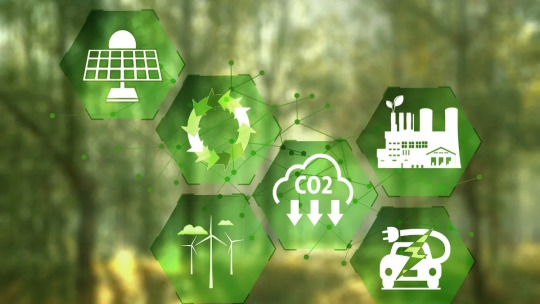
Introduction:
As the world grapples with the urgent need to mitigate climate change, the imperative for decarbonization has become increasingly apparent. At the forefront of this global effort are renewable energy sources, which play a pivotal role in reducing greenhouse gas emissions and transitioning towards a sustainable energy future. In this article, we delve into the multifaceted role of renewables in decarbonization, exploring their benefits, challenges, and the path forward.


Figure: An overview and possible decarbonisation pathways for India - Source: Mckinsey & Company
The Rise of Renewables:
Renewable energy sources, such as solar, wind, hydro, and biomass, have witnessed remarkable growth and technological advancements in recent years. This surge can be attributed to several factors, including declining costs, policy support, and heightened environmental awareness. Notably, renewables have emerged as competitive alternatives to fossil fuels, offering cleaner, more sustainable energy solutions.
Decarbonization Imperative:
Decarbonization, the process of reducing carbon dioxide and other greenhouse gas emissions, is crucial for mitigating climate change and achieving global climate targets, such as those outlined in the Paris Agreement. The energy sector, being a significant contributor to greenhouse gas emissions, holds immense potential for decarbonization through the adoption of renewable energy technologies.
The Role of Renewables:
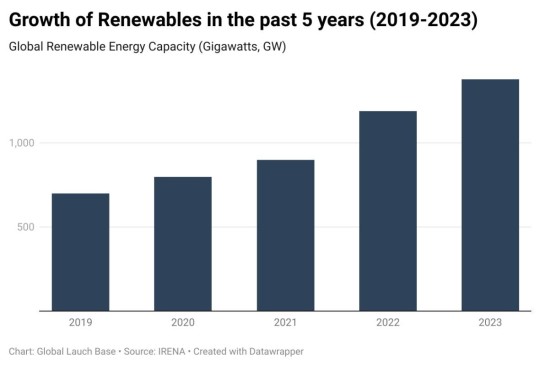
Figure: Growth of Renewables in the past 5 years
Renewable energy sources play a multifaceted role in decarbonization across various sectors:
Power Generation: Renewables are instrumental in decarbonizing electricity generation, displacing carbon-intensive sources like coal and natural gas. The scalability and versatility of renewables enable the deployment of clean energy infrastructure on a global scale, driving the transition towards low-carbon electricity grids.
Transportation: The electrification of transportation, facilitated by renewable energy, is pivotal for reducing emissions from the transport sector. Electric vehicles (EVs) powered by renewable electricity offer a sustainable alternative to conventional internal combustion engine vehicles, thereby curbing emissions and improving air quality.
Heating and Cooling: Renewable energy technologies, such as solar thermal and geothermal systems, hold promise for decarbonizing heating and cooling in buildings and industrial processes. By harnessing renewable heat sources, it is possible to reduce reliance on fossil fuels for heating purposes, contributing to overall emissions reduction.
Industry and Agriculture: Renewable energy integration in industrial processes and agriculture can mitigate emissions associated with manufacturing, processing, and agricultural activities. From solar-powered factories to bioenergy production from agricultural waste, renewables offer innovative solutions for decarbonizing these sectors.
Renewables in Low Carbon Construction:

Figure: Primary Energy Mix,% Source: Mckinsey & Company
Low carbon construction encompasses practices and technologies aimed at minimizing carbon emissions associated with building materials, construction processes, and building operation. Renewable energy plays a crucial role in this context through several avenues:
Renewable Energy Integration: Incorporating renewable energy systems, such as solar panels and wind turbines, into building designs reduces reliance on carbon-intensive grid electricity for powering homes and commercial buildings. Additionally, utilizing renewable energy for heating and cooling purposes in buildings mitigates emissions associated with traditional heating fuels like natural gas.
Sustainable Materials: Renewable resources can be utilized to produce sustainable building materials, such as bamboo, timber, and recycled materials. These materials not only have lower embodied carbon compared to traditional counterparts but also contribute to biodiversity conservation and sustainable land management.
Energy Efficiency: Renewable energy complements energy-efficient building design and technologies, enhancing overall energy performance and reducing operational carbon emissions. Integrating renewables with energy-efficient measures, such as insulation, efficient lighting, and smart building controls, maximizes energy savings and minimizes environmental impact.
Carbon Capture, Use & Storage (CCUS):
CCUS technologies are instrumental in capturing carbon dioxide emissions from industrial processes and power generation facilities, preventing their release into the atmosphere. The captured CO2 can then be utilized in various applications or stored underground, effectively reducing net emissions. Renewables play a vital role in CCUS through the following mechanisms:
Powering CCUS Facilities: Renewable energy sources provide low-carbon electricity to power CCUS facilities, reducing the carbon footprint of the capture and storage process. By utilizing renewable electricity instead of fossil fuels, CCUS operations can achieve significant emissions reductions while ensuring sustainable operation.
Renewable Hydrogen Production: Renewable energy, particularly solar and wind power, can be utilized to produce renewable hydrogen through electrolysis. This renewable hydrogen serves as a clean energy carrier for industrial processes and transportation, enabling decarbonization in sectors where direct electrification may be challenging.
Carbon Utilization: Renewable energy can facilitate carbon utilization technologies, where captured CO2 is converted into valuable products such as synthetic fuels, chemicals, and building materials. By coupling CCUS with renewable energy-driven conversion processes, carbon emissions are not only mitigated but also utilized in a circular and sustainable manner.
Challenges and Opportunities:
While the integration of renewables with low carbon construction and CCUS offers significant potential for decarbonization, several challenges must be addressed. These include technological limitations, cost competitiveness, policy frameworks, and public acceptance. Overcoming these challenges requires collaborative efforts from governments, industry stakeholders, and research institutions to drive innovation, scale deployment, and create supportive regulatory environments.
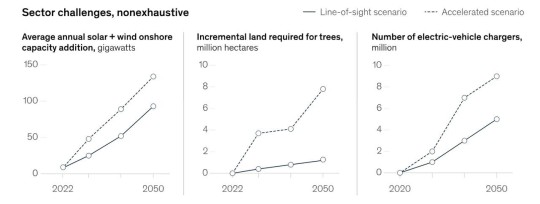
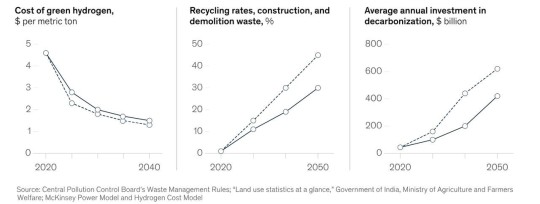
Figure: Sector Challenges, Source: Mckinsey & Company
The Path Forward:
To harness the synergies between renewables, low carbon construction, and CCUS effectively, concerted action is needed at the global, national, and local levels. This includes:
Setting ambitious decarbonization targets and policies that incentivize the adoption of renewables, promote low carbon construction practices, and support CCUS deployment.
Investing in research, development, and innovation to advance renewable energy technologies, low carbon materials, and CCUS solutions.
Fostering collaboration among governments, businesses, and communities to accelerate the transition to a low-carbon economy and achieve net-zero emissions.
Conclusion:
Renewable energy, coupled with innovative approaches such as low carbon construction and CCUS, holds immense promise in driving decarbonization across multiple sectors. By leveraging the synergies between these strategies, we can mitigate carbon emissions, enhance resilience to climate change, and pave the way for a sustainable future. Now is the time to embrace renewables as catalysts for transformative change and forge a path towards a low-carbon society.
#Renewables hashtag#Decarbonisation hashtag#SustainableEnergy hashtag#CleanEnergy#hashtag#RenewableEnergySources hashtag#SolarPower hashtag#WindEnergy hashtag#ClimateAction#GreenEnergy hashtag#CarbonReduction hashtag#EnergyTransition hashtag#EnvironmentalSustainability hashtag#RenewablePowerGeneration#LowCarbonFuture hashtag#EnergyInnovation
0 notes
Text
Pricing in the Meat Industry
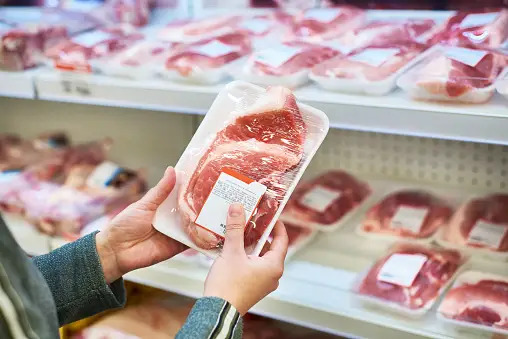
Written By: Gargi Sarma
Meat is more than simply food; it's a sophisticated commodity with a complex web of factors impacting its price. It's a mainstay in many diets around the world. Customers' final price is shaped by a wide range of factors from the farm gate to the shop shelf. To fully comprehend meat pricing, we must examine this complex system and navigate the interactions between supply and demand, market structures, laws, and even psychological strategies.
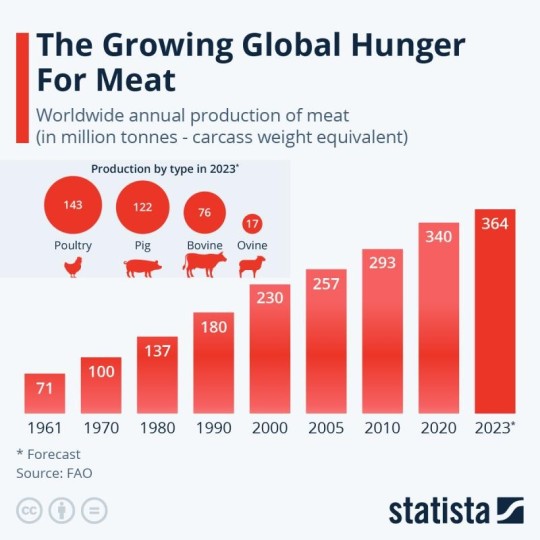
Figure 1: The Growing Global Hunger for Meat (Source: Statista)
For many years, there has been an increasing global need for beef. The Food and Agriculture Organization of the United Nations (FAO) reports that during the 1960s, the world's meat production expanded fivefold. The FAO estimates that 364 million tons of meat will be produced in 2023.
The Intertwined Dance of Supply and Demand:
The basic economic concept of supply and demand is at the core of the price of meat. Animal availability and pricing can be greatly impacted by a number of supply-side factors, including weather fluctuations, disease outbreaks, feed costs, and livestock breeding cycles. Farmers may be forced to grow livestock to market weight earlier if feed prices suddenly rise, for example. This could result in a glut of smaller animals and possibly lower prices. On the other hand, severe winters may restrict the amount of feed available, reducing growth, and resulting in a drop in supply and subsequently higher prices.
Demand is also very important. The intake of meat can be influenced by cultural customs, consumer preferences, income levels, and even health issues. Increased demand for premium cuts, for instance, might result from rising disposable incomes, while customers may choose leaner choices due to greater health consciousness, which would have an impact on costs across the board.
Market Structures: From Farm to Fork:
Meat travels through a complex network of interconnected parties from farm to fork, all of whom have a stake in the outcome.
Farmers: The initial expenses of growing livestock, such as feed, land, and veterinary care, are borne by farmers because they are the primary producers. The industry's power dynamics and erratic market conditions frequently put pressure on its profit margins.
Packers and processors: These massive companies handle the killing, butchering, and packaging of meat; they also add to processing expenses and have an impact on the cuts and portions that are offered to customers. Over time, their consolidation has led to worries about possible price manipulation and diminished bargaining leverage for farmers.
Distributors and retailers: The final price at the checkout counter is further increased by the markups, marketing expenditures, and transportation charges that wholesalers and supermarkets add. The ultimate consumer pricing is also influenced by the degree of competition among retailers and their ability to negotiate with processors.
Control and Outside Factors:
In addition to market dynamics, the pricing of meat is significantly influenced by government restrictions and external influences. Trade agreements, import quotas, and food safety regulations can affect the supply and demand inside the country, causing changes in prices. Disease outbreaks, such as avian influenza, for example, might lead to import restrictions, which lowers competition and may drive up domestic prices. Similar to this, environmental laws about pollution prevention or animal welfare may increase producer costs, which will ultimately be reflected in the end product price.
Psychological Pricing: Gently prodding customers in the meat section
Even the price tag, which may appear simple, is skillfully designed to affect how customers behave. Charm pricing, which ends prices in nines, such as $4.99, is one technique that lowers costs and creates a sense of value. Anchor pricing emphasizes savings and portrays the final price more enticingly by presenting a higher initial price followed by a discount. When costly cuts are placed strategically next to less expensive options, customers may be persuaded to choose the more expensive options by use of comparison.
Challenges:
The meat industry faces a complex web of challenges when it comes to pricing its products. Balancing profitability with consumer affordability while navigating a volatile market requires careful consideration of several factors:
Demand Fluctuations:
Seasonality: Consumer demand for meat varies significantly throughout the year, impacting prices. Holidays and barbeque season drive up demand, while quieter periods see prices dip. Predicting these ebbs and flows accurately is crucial for setting optimal prices.
Economic Trends: Fluctuations in the economy can significantly impact consumer spending habits. During recessions, consumers might opt for cheaper cuts or alternatives, forcing price adjustments.
Dietary Trends: Growing awareness of health and environmental concerns has led to a rise in vegetarianism and flexitarianism. This shift in consumer preferences necessitates diversification of offerings and potentially lower prices for traditional meat products.
Reliable Transportation:
Perishable nature: Meat is highly perishable, requiring consistent cold chain logistics for safe transportation. Maintaining this infrastructure adds to operational costs, which may be reflected in pricing.
Fuel and labor costs: Rising fuel prices and labor shortages in the transportation sector can significantly impact delivery costs, putting pressure on meat processors to adjust prices accordingly.
Global disruptions: Pandemics, geopolitical conflicts, and natural disasters can disrupt global supply chains, leading to transportation delays and increased costs that may require price adjustments.
Wastage:
Processing losses: During processing, trimming, and packaging, unavoidable meat loss occurs. Minimizing this wastage through efficient practices and technology helps control costs and allows for fair pricing.
Spoilage: Improper handling or storage can lead to spoilage, resulting in lost revenue and potentially impacting future pricing strategies to compensate for these losses.
Consumer waste: Consumers may discard parts of meat due to improper storage or preparation, leading to overall industry waste and potential pressure on producers to lower prices to compensate.
Production:
Feed costs: The cost of animal feed fluctuates based on grain prices and other factors, directly impacting production costs and requiring adjustments in pricing strategies.
Animal health and welfare: Ensuring animal health and welfare often involves additional costs for veterinary care, improved living conditions, and antibiotic-free practices. These efforts might be reflected in higher prices for premium meat products.
Labor shortages: The meat industry faces labor shortages, leading to increased labor costs and potentially requiring price adjustments to maintain profitability.
Additional Challenges:
Competition: Intense competition within the meat industry puts pressure on pricing, forcing producers to find ways to differentiate their products and justify higher prices.
Government regulations: Environmental and animal welfare regulations can add to production costs, which may be reflected in pricing strategies.
Consumer price sensitivity: Consumers are increasingly price-sensitive, demanding value for their money. Finding the right balance between affordability and profitability is crucial for success.
Data & Analytics: Taking the wheel of pricing:
Meat producers and retailers are depending more and more on advanced analytics to guide their pricing strategies in the data-driven world of today. To forecast demand and improve pricing models, they monitor rival pricing, consumer preferences, industry trends, and even meteorological patterns. Through the examination of past data and current sales figures, they can dynamically modify prices, providing specific discounts or modifying markups in response to shifts in demand.
Produce Freshness Detector: Integration with POS Data - Retailers in the meat business can precisely monitor the sales performance of fresh produce by connecting the data from the Produce Freshness Detector with point-of-sale (POS) information. By optimizing revenue and decreasing waste, this integration enables dynamic pricing adjustments based on real-time freshness indicators.Teys Australia: This major Australian meat processor uses the "Shelf Life Predictor" system, which combines sensors, machine learning, and cloud-based analytics to assess meat freshness and predict shelf life. Integrating this data with POS allows for informed dynamic pricing based on real-time product quality.
In-Store Display: Integration with Demographic Detection Camera - Retailers can customize promotional content based on the demographics of the customers present by merging data from demographic detection cameras with information from in-store displays. For example, personalized advertising might be displayed based on the preferences of a certain demographic, such as meat varieties, to maximize sales and decrease waste.InContext Solutions: Integrates in-store displays with shopper behavior data, which could include pre-existing demo data.
Expiration Date Tracker: Integration with Inventory Data - Inventory management systems that integrate data from expiration date trackers guarantee proactive handling of merchandise that is about to expire. This integration reduces waste by enabling prompt restocking, markdowns, or targeted promotions to move out merchandise before it goes bad.Fishbowl: This popular cloud-based inventory management system (IMS) offers built-in expiration date tracking, batch and lot control, and real-time stock visibility to minimize waste and optimize product movement.
Demographic Detection Camera: Integration with POS Data and Electronic Shelf Labels - Retailers may learn more about how different populations purchase by combining POS data, electronic shelf labeling, and demographic detection camera data. Strategic price decisions, such as providing discounts or promotions during peak hours for particular consumer groups, are made possible by this knowledge, which maximizes revenue.Criteo: Specializes in retargeting and dynamic product ads, potentially benefiting from real-time purchase data from POS systems.
Electronic Shelf Labels: Integration with GS1 Barcode Data and Inventory Data - Accurate product information and inventory levels can be obtained by integrating GS1 barcode data with electronic shelf labels. By ensuring that the price on the shelf corresponds with the real product data, this integration lowers pricing errors. Real-time information on inventory levels also reduces waste by preventing stockouts and overstocking.RapidPricer: RapidPricer integrates electronic shelf labels with barcode data and inventory management systems which ensures accurate pricing and helps manage stock levels to avoid overstocking and waste.
GS1 Barcode Data: Integration with POS Data and Weather Data - When paired with real-time weather information and point-of-sale data, GS1 barcode data enables shops to modify prices in response to outside variables. For example, shops can use targeted promotions or discounts on particular meat products to increase demand and minimize wastage during bad weather.GS1 Barcode: When a product with a GS1 barcode is scanned at checkout, POS systems can immediately identify the product and link its sales data to real-time weather information. This allows retailers to implement dynamic pricing strategies or targeted promotions based on weather patterns.
Integration with Weather Data: Reduction of CO2 Emission - Effective supply chain management is made possible by the integration of weather data with inventory and transportation systems. Businesses can minimize CO2 emissions and fuel usage by optimizing transportation routes based on weather conditions. Furthermore, precise weather forecasts support demand forecasting by avoiding overstocking and the waste that follows.Microsoft Azure Maps: Offers various geospatial services, including weather forecasting APIs, that can be integrated into supply chain management and logistics software.
Benefits:
Strategic Pricing Decisions: Retailers may optimize income by making well-informed pricing decisions based on customer behavior, product freshness, and real-time considerations, thanks to the integration of these devices and data sources.
Reducing Wastage: By making sure that products are sold before they expire, proactive freshness monitoring, accurate inventory management, and focused promotions help to reduce wastage.
Minimization of CO2 Emission: The supply chain's integration of meteorological data optimizes transportation routes and cuts down on pointless stock movements, hence minimizing CO2 emissions and promoting sustainable practices in the meat business.
Case Studies: Unveiling the Pricing Puzzles:
The Chicken Conundrum: In the US, broiler chicken production is dominated by vertically integrated companies that control all aspects of the production chain, from breeding to processing and retail. This gives them significant control over supply and pricing, leading to relatively stable, but possibly lower prices for consumers.
The Wagyu Wars: Premium cuts of Wagyu beef, renowned for their marbling and intense flavor, command significantly higher prices due to limited supply and stringent breeding practices. Producers in countries like Japan and Australia rely on careful market segmentation and targeted marketing to justify the premium pricing.
RapidPricer: RapidPricer helps automate pricing, promotions, and assortment for retailers. The company has capabilities in retail pricing, artificial intelligence, and deep learning to compute merchandising actions for real-time execution in a retail environment. RapidPricer solution focuses on a strategic subset of products within the meat category characterized by limited shelf life and seasonal stability. To measure the solution's effectiveness, RapiPricer establishes clear Key Performance Indicators (KPIs) which aim to achieve the following objectives for the meat industry:
Reduce food waste through optimized pricing.
Increase net margin by minimizing losses.
Boost revenue by maximizing product sell-through.
Moreover, RapidPricer can work on data analytics with the above-mentioned partner ecosystem.

Figure 2: RapidPricer’s Solution
Conclusion:
To sum up, in the meat industry, efficient pricing techniques are critical to striking a careful balance between optimizing profits, reducing waste, and advancing sustainability. Businesses can make strategic decisions that align with consumer preferences and market dynamics by utilizing cutting-edge technologies like produce freshness detectors, in-store displays, and demographic detection cameras. These technologies can be seamlessly integrated with data sources like inventory, GS1 barcodes, POS, and weather information. By minimizing CO2 emissions and significantly reducing food waste, the application of such comprehensive pricing strategies not only maximizes financial outcomes but also helps to reduce environmental effects. As the meat business develops, adopting creative pricing strategies guarantees not only financial success but also a dedication to satisfying consumers' shifting needs and promoting sustainable practices for a healthier future.
About RapidPricer
RapidPricer helps automate pricing and promotions for retailers. The company has capabilities in retail pricing, artificial intelligence and deep learning to compute merchandising actions for real-time execution in a retail environment.
Contact info:
Website: https://www.rapidpricer.com/
LinkedIn: https://www.linkedin.com/company/rapidpricer/
Email: [email protected]
#meatindustry hashtag#pricingstrategies hashtag#supplychainmanagement hashtag#sustainablebusiness hashtag#datadrivendecisions hashtag#retailtech hashtag#foodwastereduction hashtag#markettrends hashtag#consumerbehavior hashtag#environmentalsustainability hashtag#techinretail hashtag#innovativepricing hashtag#demographicanalysis hashtag#smartretail hashtag#foodtech hashtag#globalmeatdemand hashtag#economicimpact hashtag#dynamicpricing
0 notes
Text

Revolutionizing Waste Management with RightWaterSystem's STP Plant
Explore the cutting-edge sewage treatment technology offered by RightWaterSystem, leading STP plant manufacturers. Our innovative systems efficiently process wastewater, ensuring environmental sustainability and promoting clean water reuse. Join us in creating a greener tomorrow with responsible waste management solutions.
Hashtags: #STPPlant #SewageTreatment #WasteManagement #EnvironmentalSustainability #RightWaterSystem #ROPlant #WaterPurification #CleanWaterForAll #Sustainability #RightWaterSystem, #ROPlantmanufacturer #STPplantmanufacturer #Etpplantmanufacturer #IndustrialROPlant #ZLDPlantmanufacturer #UFplantmanufacturer #ROplant #STPplant #ETPplant #ZLDplant #UFplant #Swimmingpoolfiltrationsystem
#STPPlant#SewageTreatment#WasteManagement#EnvironmentalSustainability#RightWaterSystem#ROPlant#WaterPurification#CleanWaterForAll#Sustainability#ROPlantmanufacturer#STPplantmanufacturer#Etpplantmanufacturer#IndustrialROPlant#ZLDPlantmanufacturer#UFplantmanufacturer#ROplant#STPplant#ETPplant#ZLDplant#UFplant#Swimmingpoolfiltrationsystem
0 notes
Text
"Empowering Mobility: The Evolution of Automotive Batteries 🚗🔋"
Automotive batteries are the beating heart of electric and hybrid vehicles, providing the energy needed to power their motors and propel them forward.
From traditional lead-acid batteries to cutting-edge lithium-ion technology, the automotive battery landscape has undergone significant advancements in recent years. With hashtags like #AutomotiveBattery, #ElectricVehicles, #EVs, #HybridCars, #CleanEnergy, #SustainableTransportation, #BatteryTechnology, #EnergyStorage, #GreenMobility, #FutureOfTransportation, #RenewableEnergy, #EfficientPower, #TechInnovation, #EnvironmentalSustainability, and #ElectricRevolution, the ongoing conversation surrounding automotive batteries highlights their critical role in reducing carbon emissions and transitioning towards a more sustainable transportation system. As the demand for electric vehicles continues to rise, so too does the need for more efficient, reliable, and affordable automotive batteries. Through ongoing research and development efforts, battery technology is constantly evolving, with advancements aimed at improving energy density, charging speed, and lifespan. By harnessing the power of clean energy storage, automotive batteries are revolutionizing the way we think about transportation, paving the way for a greener, more sustainable future. 🌱🔋
0 notes
Text
Soymilk Sensation: Riding the Wave of the Soy Beverage Market
The Soy Beverage market is experiencing a renaissance as consumers seek nutritious and sustainable alternatives to dairy milk. Soymilk, made from soybeans, offers a creamy texture and a wealth of nutrients, including protein, vitamins, and minerals. As plant-based diets gain popularity and environmental concerns drive demand for eco-friendly options, soymilk emerges as a favorite among health-conscious individuals looking to nourish their bodies while reducing their carbon footprint.
Driven by the demand for plant-based products and ethical consumption, the Soy Beverage market is thriving with innovation and diversity. With hashtags like #PlantPower, #DairyFreeLiving, and #SoyRevolution trending on social media platforms, soymilk is celebrated as a versatile and nutritious choice for consumers seeking a dairy alternative. Whether enjoyed in a latte, poured over cereal, or blended into smoothies, soymilk satisfies cravings while supporting a sustainable lifestyle. As the Soy Beverage market continues to grow, it represents not just a beverage choice but a movement towards mindful consumption and a greener future. #PlantBasedLiving #SustainableChoices #HealthyEating #DairyAlternative #NutrientRich #EnvironmentalSustainability #HealthyChoices #EcoFriendlyLiving #VeganOptions #EthicalConsumption #PlantPowered #HealthyLiving #SoyGoodness #GreenLiving #NutritionalBenefits
0 notes
Text
"Driving Innovation: The Power of Automotive Traction Motors 🚗⚡️"
Automotive traction motors are the driving force behind the electrification of vehicles, powering everything from hybrid cars to fully electric models.
These electric motors convert electrical energy into mechanical energy, propelling vehicles with efficiency and performance. With hashtags like #AutomotiveTractionMotors, #ElectricVehicles, #EVs, #HybridCars, #CleanEnergy, #SustainableMobility, #ElectricRevolution, #GreenTransportation, #FutureOfMobility, #RenewableEnergy, #EfficientPower, #TechInnovation, #EnvironmentalSustainability, #EnergyEfficiency, and #ElectricDrive, the ongoing conversation surrounding automotive traction motors highlights their role in reducing carbon emissions and combating climate change. As the automotive industry pivots towards electrification, the demand for high-performance traction motors continues to grow, driving innovation and pushing the boundaries of automotive engineering. Through ongoing research and development efforts, automotive traction motors are becoming more efficient, compact, and powerful, paving the way for a cleaner, greener future of transportation. 🌱🔋
0 notes